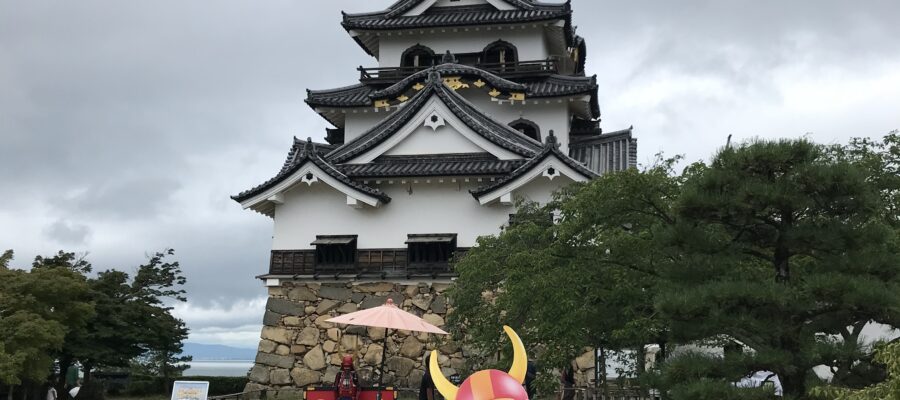琵琶湖方面から城内へ
国宝の彦根城。関西に住みながら訪問したのは初めてでした。今回も、西国霊場三十三所を巡る旅で、琵琶湖に浮かぶ竹生島にある宝厳寺へのフェリーが彦根から往復しているので、その帰りに寄ることにしました。琵琶湖側から歩いて城内に入りました。
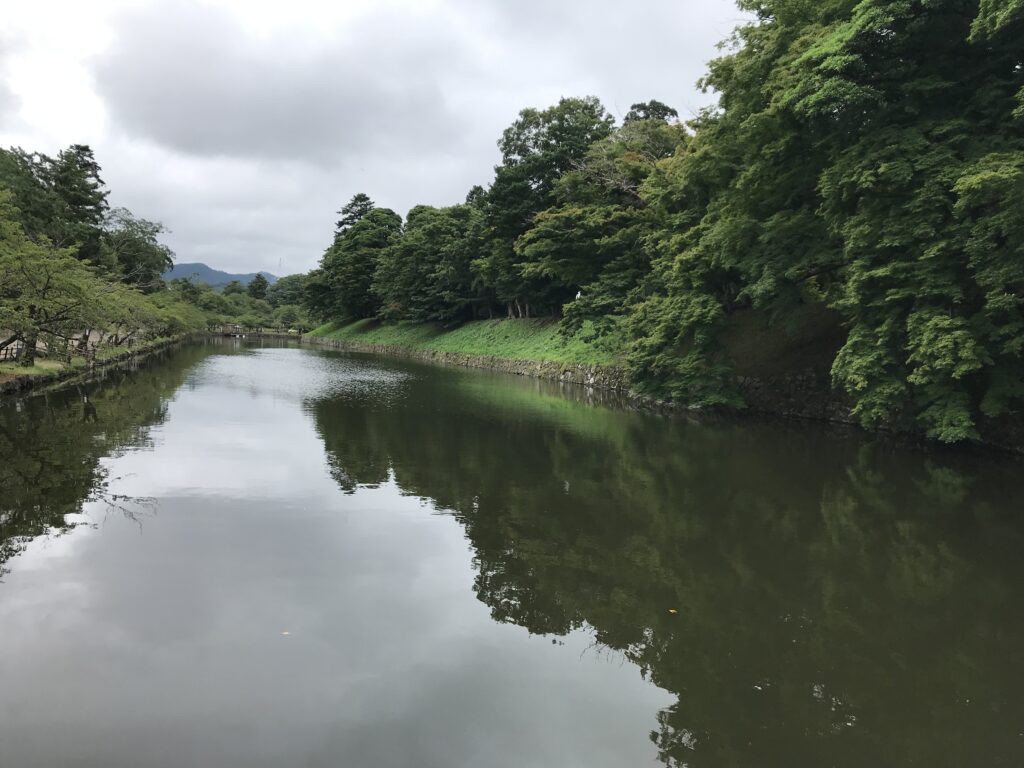
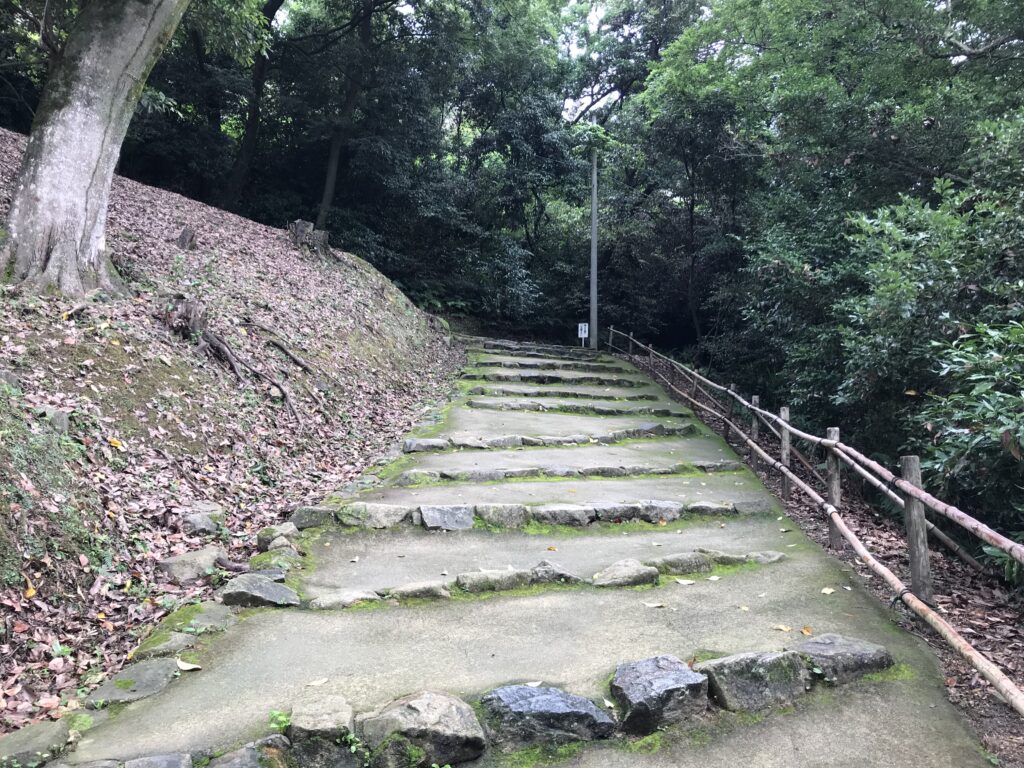
西の丸三重櫓に上る
濠を越えて、天守に近づく石段を登って、まず、西の丸にある西の丸三重櫓に入ってみました。櫓内部は、防御拠点なので、殺風景な造りです。ここからは琵琶湖が一望できます。琵琶湖から侵入してくる敵に備えていたのでしょうが、彦根城が実戦に使用されていないので、どの程度の防御力があったのか不明です。
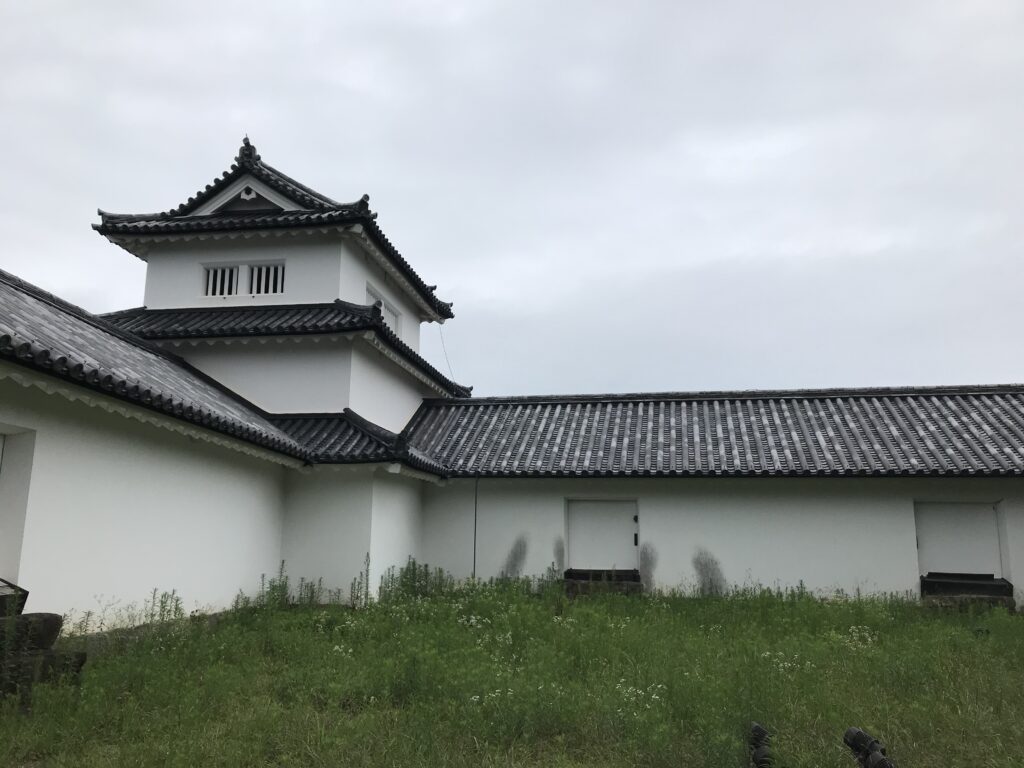
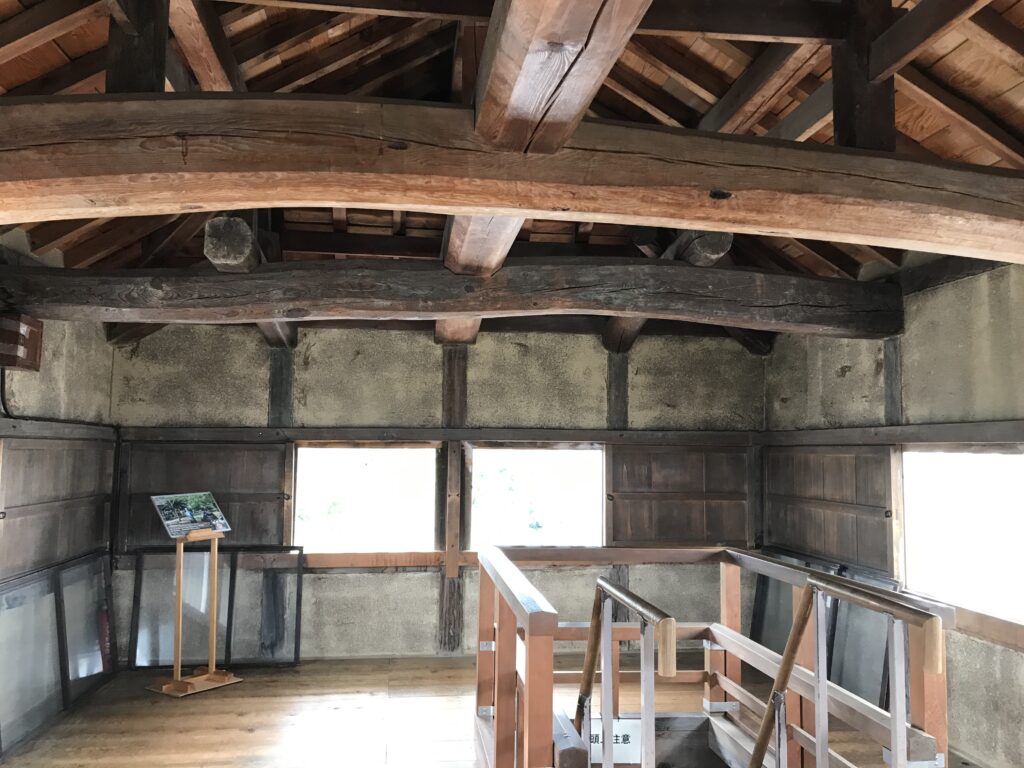
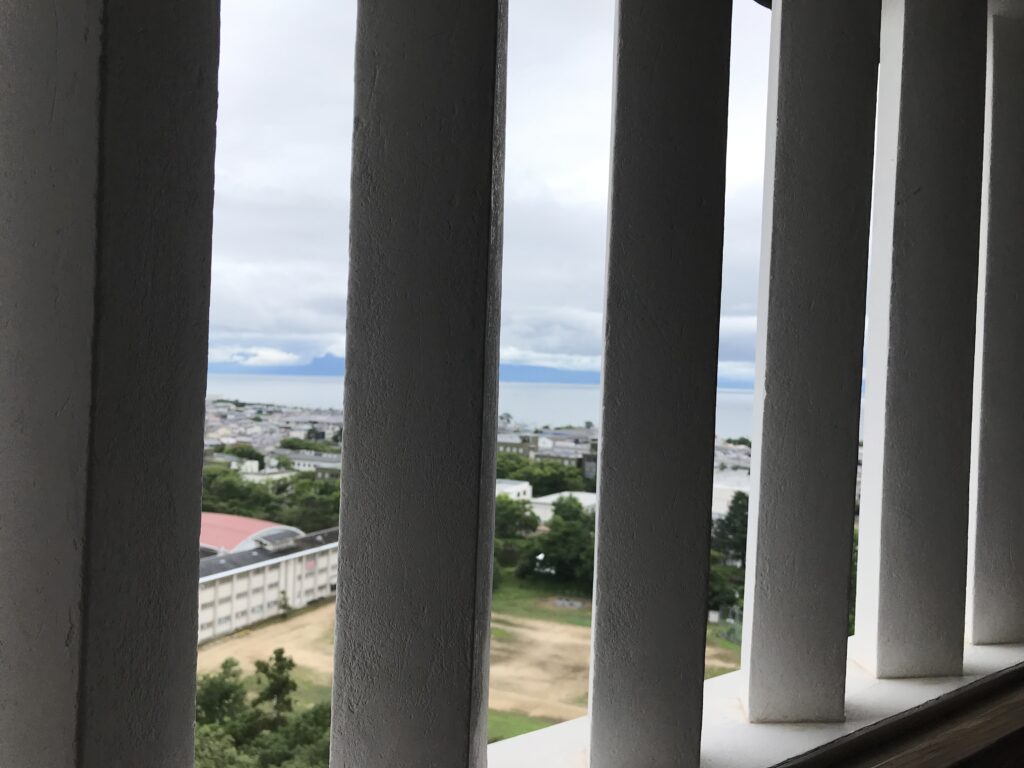
3階3重天守にも上る
やはり、3階3重の屋根で構成された天守に登らないと、来た意味がないでしょう。同じ国宝でも姫路城のような高さ、大きさがないので、敵を威嚇する迫力には欠けますが、外観の美しさは、さすがに国宝だけのことはあります。お城の前には記念撮影用にマスコットのひこにゃんのボードが置かれていました。
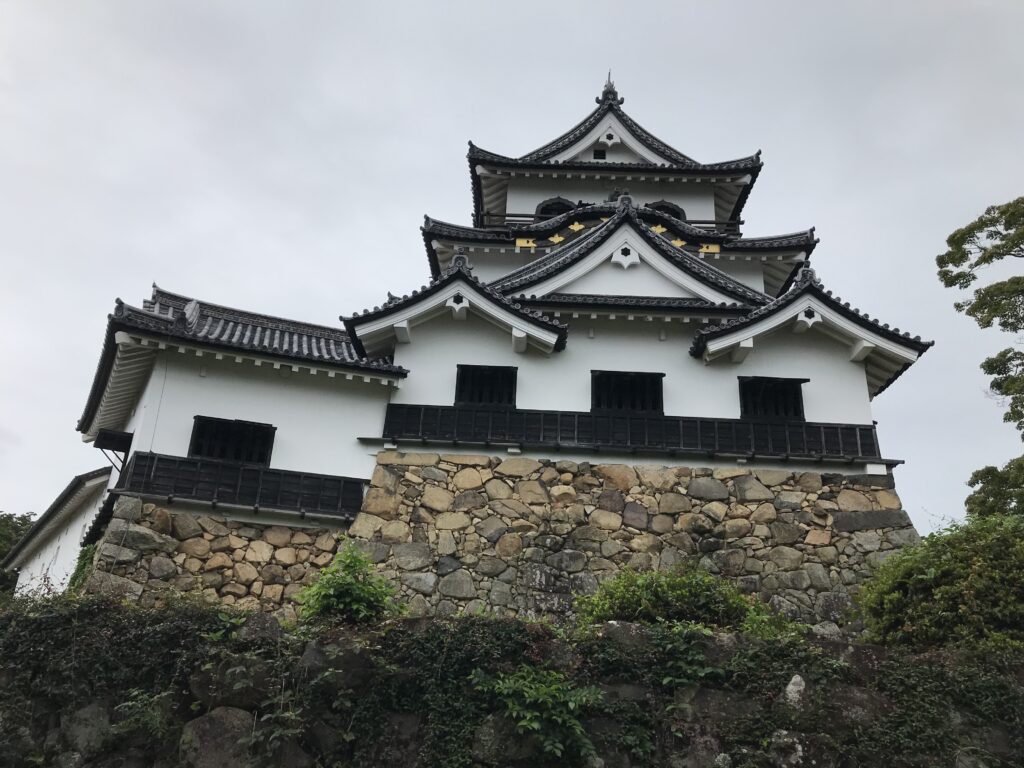
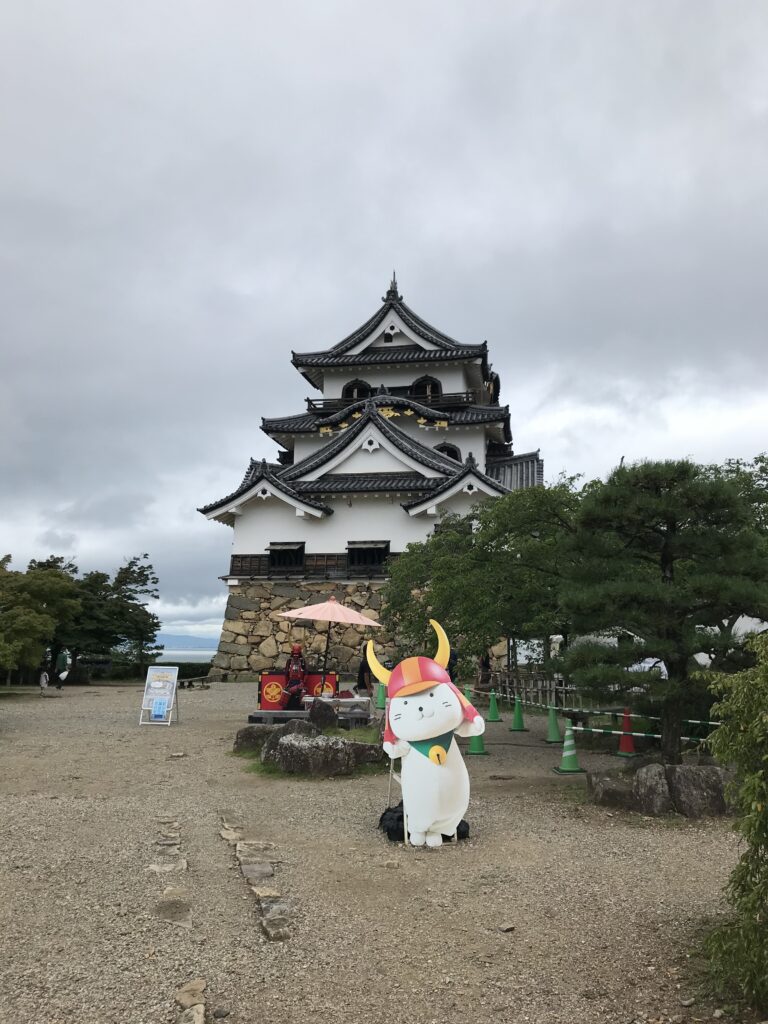
天守最上階からは城下を見下ろせます。城主にとっては、見下ろすという感覚が大事だったのかも知れません。代々の藩主たちは、自らが支配地域の頂点になっていることを、ここに立つことで感じていたのかもしれません。天守を上り下りで苦労したのは、1階の階段が超急傾斜になっており、下りるのに苦労しました。足腰に不安のある方には厳しい階段ですので、お気をつけください。
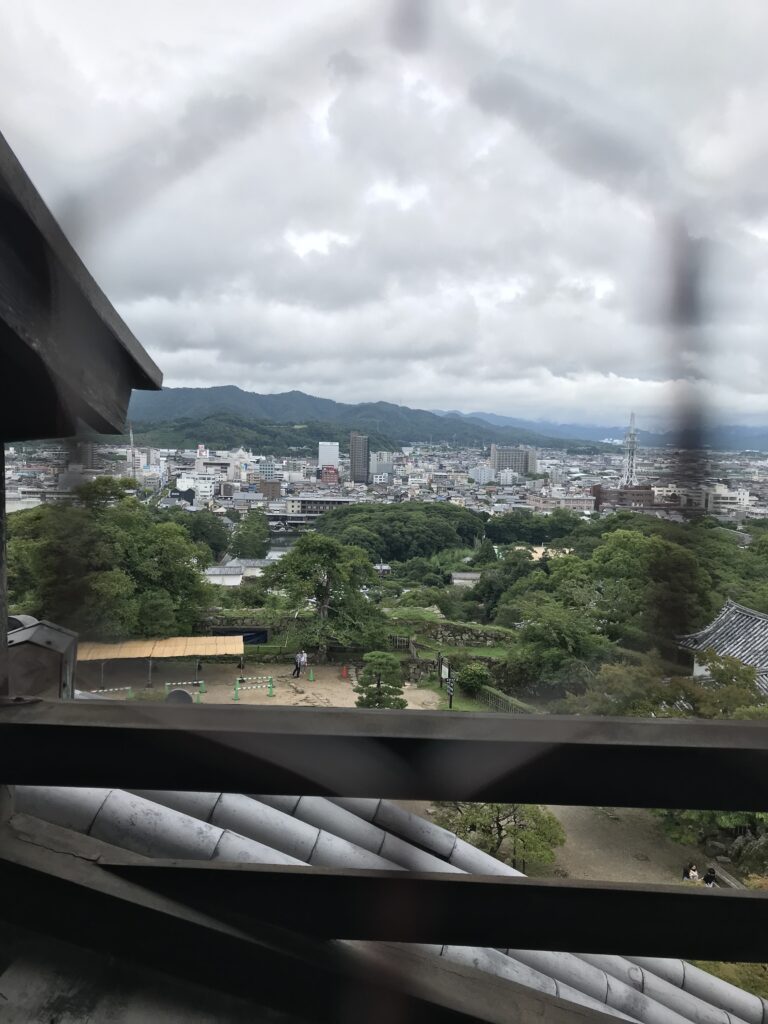
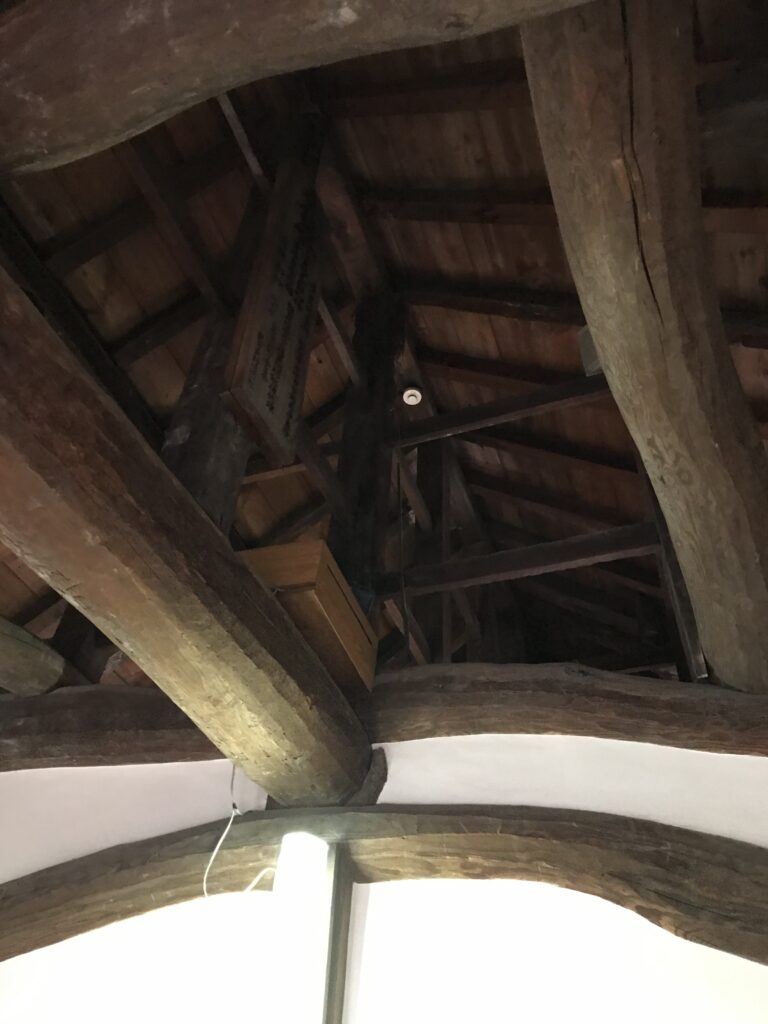
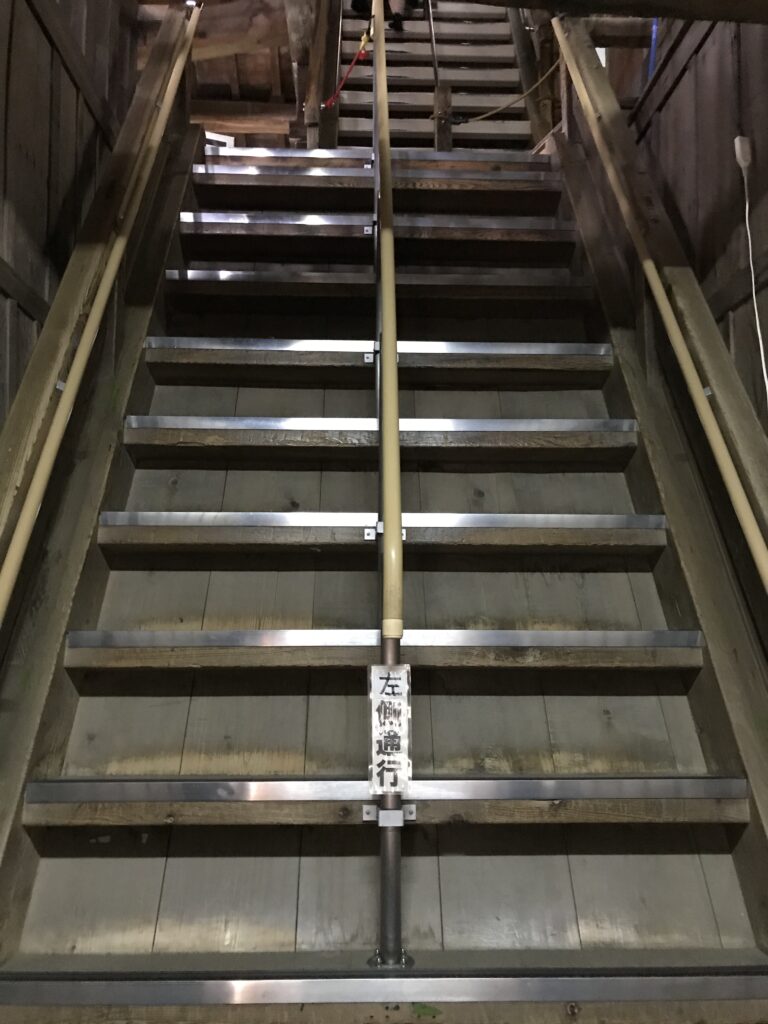
天秤櫓と廊下橋
それと、彦根城の天秤櫓が有名ですね。この櫓の前にある廊下橋は、敵が攻めてきた場合、天秤柱の門を閉めて、橋を落としてしまうことで、敵の侵入を防げるそうです。そうなると、石垣が高い分、敵も攻めあぐねます。
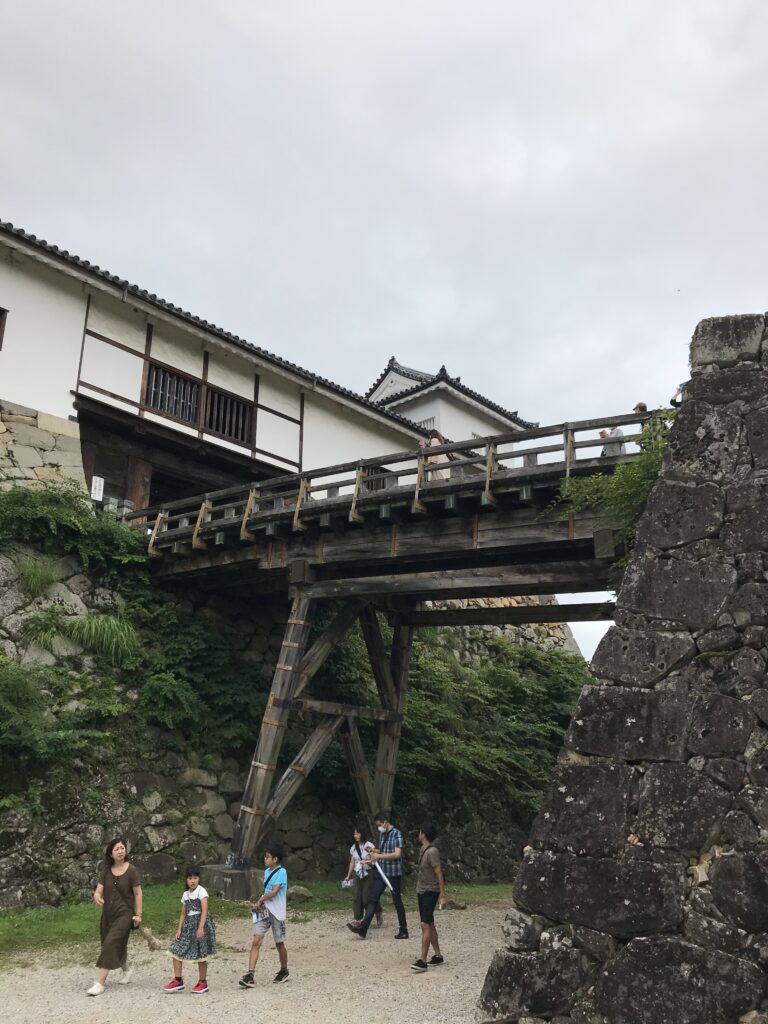
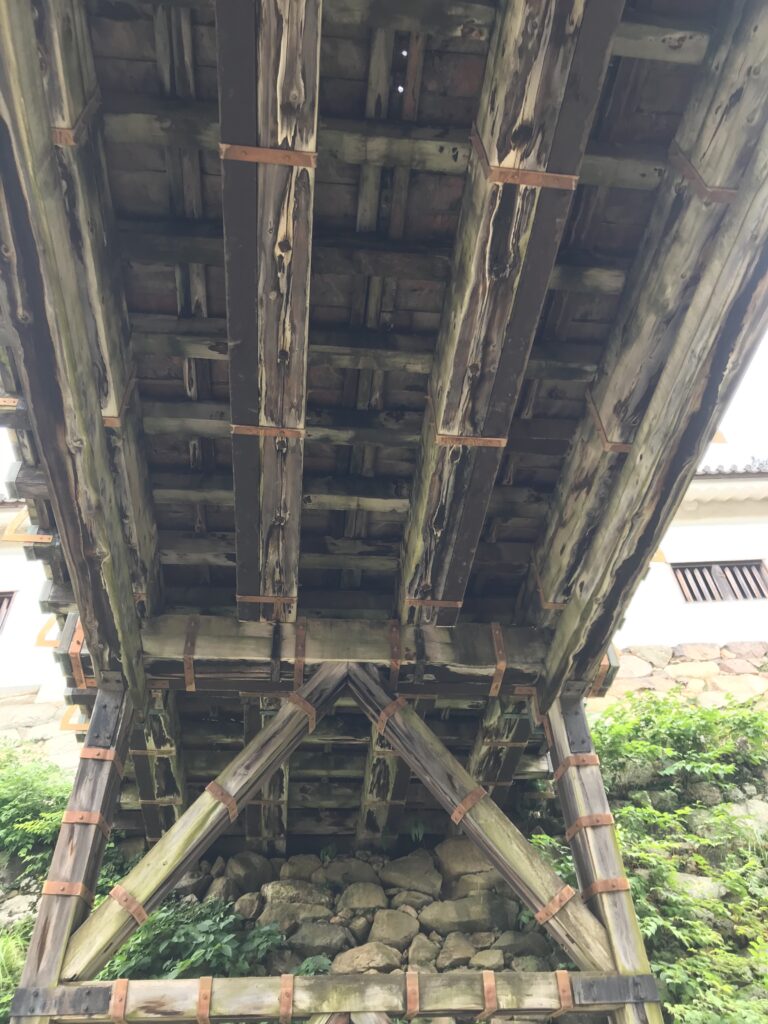
彦根城を訪れた通訳ガイドの方には、是非、城内にある彦根博物館も訪問して欲しいと思います。彦根を治めた井伊家の品々が展示されているだけでなく、彦根城で使われていた能舞台が現存しています。また、ここには英文での説明資料も豊富に置かれていますので、武士に関する英語表現を確認しておきたい方は、展示解説シートの英語版を収集されることをお勧めいたします。(完)
彦根城の御城印
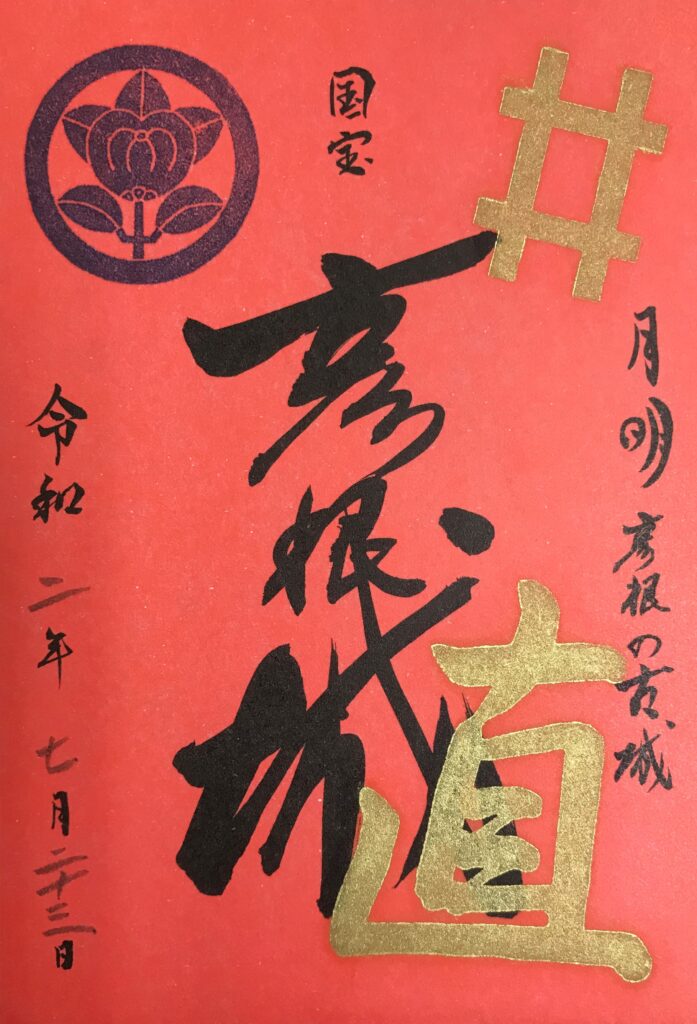
彦根城が紹介されている書籍
現存12天守および国宝5天守の彦根城ですから、御城を紹介する本にはだいたい記載されています。今回は、私が参照した本を記載します。
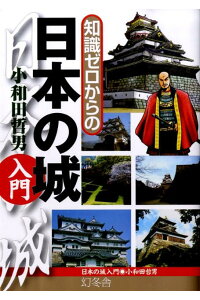
価格:1,430円
(2021/7/13 12:42時点)
感想(12件)
Hikone Castle (1)
Hikone Castle is a national treasure. This was the first time I visited it while living in the Kansai region. Again, I was on a trip to visit the 33 sacred places in the western part of Japan, and decided to stop by on my way back from the ferry to Hogonji Temple on Chikubu Island in Lake Biwa, which makes a round trip from Hikone. I walked into the castle from the Lake Biwa side.
After crossing the moat and climbing the stone steps approaching the castle tower, I first entered the Nishinomaru three-story turret in the Nishinomaru area. The inside of the turret is a bleak structure since it is a defensive base. From here, you can enjoy a panoramic view of Lake Biwa. It must have been prepared for enemies invading from Lake Biwa, but since Hikone Castle was not used for actual battles, it is unknown how well it was defended.
After all, there would be no point in coming unless you climb up to the castle tower, which consists of three floors and three layers of roofs. Although it is a national treasure, it is not as tall and large as Himeji Castle, so it lacks the power to intimidate the enemy, but its beautiful exterior is indeed a national treasure. In front of the castle, there was a board with Hikonyan, the mascot, for commemorative photos.
From the top floor of the castle tower, you can look down on the castle. The sense of looking down may have been important to the lord of the castle. The generations of feudal lords may have felt that they were at the top of their domain by standing here. One of the difficulties in ascending and descending the castle tower was the extremely steep slope of the stairs on the first floor, which made it difficult to descend. Please be careful, as these stairs are tough for those who are not comfortable on their feet and legs.
Also, the Tenbin Yagura (balance tower) of Hikone Castle is famous. The corridor bridge in front of this turret is said to prevent enemies from entering by closing the gate of the balance pillar and dropping the bridge if they attack. Then, the enemy would be unable to attack because of the high stone walls.
I would like to encourage interpreter guides who visit Hikone Castle to also visit the Hikone Museum, which is located inside the castle. Not only are the items of the Ii family that ruled Hikone on display, but the Noh stage that was used at Hikone Castle is still in existence. In addition, there are plenty of explanatory materials in English here, so if you would like to check English expressions related to the samurai, I recommend that you collect the English version of the exhibition explanatory sheet. (End)
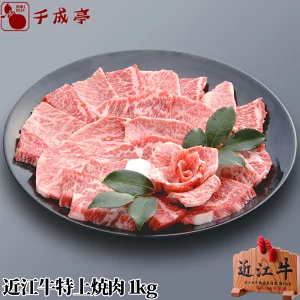
「近江牛 特上焼肉 1kg」 ギフト プレゼント 御祝 内祝 お返し
価格:10,800円
(2022/8/10 13:52時点)
感想(22件)
Château de Hikone (1)
Le château de Hikone est un trésor national. C’était la première fois que je le visitais alors que je vivais dans la région du Kansai. Encore une fois, j’étais en voyage pour visiter les 33 lieux sacrés de la partie occidentale du Japon, et j’ai décidé de m’y arrêter en revenant du ferry pour le temple Hogonji sur l’île de Chikubu dans le lac Biwa, qui fait un aller-retour depuis Hikone. Je suis entré dans le château par le côté du lac Biwa.
Après avoir traversé les douves et gravi les marches en pierre qui mènent à la tour du château, je suis d’abord entré dans la tourelle à trois étages de Nishinomaru, dans la zone de Nishinomaru. L’intérieur de la tourelle est une structure morne puisqu’il s’agit d’une base défensive. D’ici, vous pouvez profiter d’une vue panoramique sur le lac Biwa. Le château a dû être préparé pour faire face à l’invasion d’ennemis venant du lac Biwa, mais comme le château de Hikone n’a pas été utilisé pour des batailles réelles, on ignore dans quelle mesure il était bien défendu.
Après tout, il serait inutile de venir à moins de monter dans la tour du château, qui comprend trois étages et trois couches de toits. Bien qu’il s’agisse d’un trésor national, il n’est pas aussi grand et large que le château de Himeji, il n’a donc pas le pouvoir d’intimider l’ennemi, mais son bel extérieur est effectivement un trésor national. Devant le château, il y avait un panneau avec Hikonyan, la mascotte, pour les photos commémoratives.
Depuis le dernier étage de la tour du château, vous pouvez regarder le château de haut en bas. L’impression de regarder en bas était peut-être importante pour le seigneur du château. Les générations de seigneurs féodaux ont pu avoir le sentiment d’être au sommet de leur domaine en se tenant ici. L’une des difficultés pour monter et descendre de la tour du château était la pente extrêmement raide des escaliers du premier étage, qui rendait la descente difficile. Veuillez faire attention, car ces escaliers sont difficiles pour ceux qui ne sont pas à l’aise avec leurs pieds et leurs jambes.
Par ailleurs, le Tenbin Yagura (tour d’équilibre) du château de Hikone est célèbre. On dit que le pont du couloir situé devant cette tourelle empêche les ennemis d’entrer en fermant la porte du pilier d’équilibre et en faisant tomber le pont s’ils attaquent. L’ennemi serait alors incapable d’attaquer en raison des hauts murs de pierre.
J’aimerais encourager les guides interprètes qui visitent le château de Hikone à visiter également le musée de Hikone, qui se trouve à l’intérieur du château. Non seulement les objets de la famille Ii qui régnait sur Hikone y sont exposés, mais la scène de Nô qui était utilisée au château de Hikone existe toujours. En outre, il y a beaucoup de matériel explicatif en anglais ici, donc si vous voulez vérifier les expressions anglaises liées aux samouraïs, je vous recommande de recueillir la version anglaise de la feuille explicative de l’exposition. (Fin)
